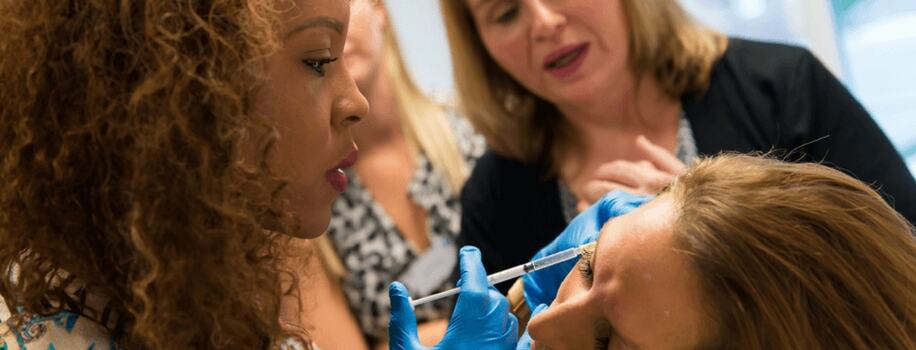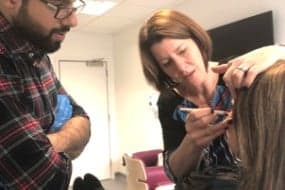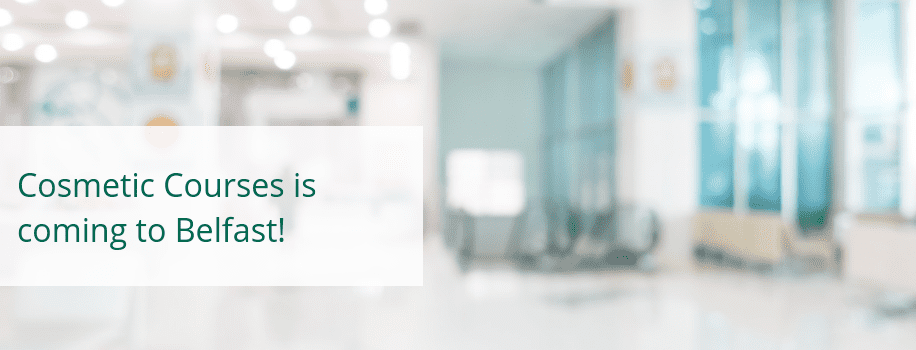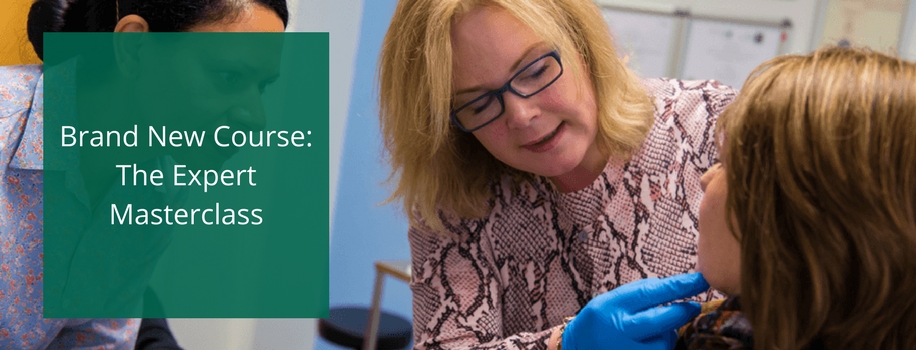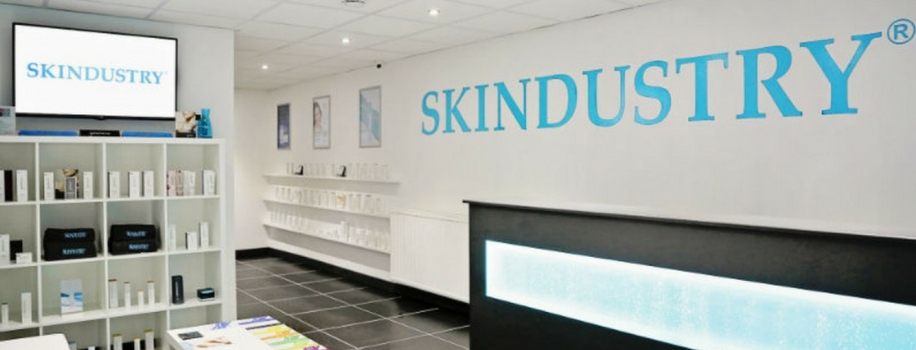Are you a doctor searching for the right Botox Courses? Our range of Botox and Dermal Filler courses are designed to give you qualifications in non-surgical treatments while providing you with the skills and confidence to succeed.
Why Doctors Should Train in Aesthetics & Botox
Many doctors are feeling the frustrations of working in the NHS, bound by strict regulations and an inability to change what they’d like to. The aesthetics industry opens the door for doctors to gain back control over their careers while providing a higher standard of care. It’s a thriving, highly profitable industry which is growing. In fact, 90% of UK cosmetic treatments are non-surgical.
As an established training provider for over 16 years, we’ve supported thousands of people to build careers in the world of medical aesthetics. We help doctors to develop successful businesses, working at reduced hours on a higher income.
The Shift Between Surgical to Non-Surgical Treatments
Medical training puts doctors and physicians in good stead for understanding aesthetics, already having an in-depth knowledge of aspects such as facial anatomy and injection techniques. Many of our trainers were (and still are) GPs, using our training to expand their clinics and the services they provide.
The Benefits of Training in Aesthetics
Medical aesthetics is one of the most flexible sectors to train in, giving you greater control over the hours you work and experience you can offer to your patients. It’s the chance to become your own boss, develop a successful business, enjoy fewer regulations and provide the care you want to give. As a continually evolving industry in high demand, the income potential is enormous.
Where to Start – What Botox Courses for Doctors We Offer
Our Botox training for doctors is CPD certified and recognised by all leading insurance providers. However, where do you start? While we have a wide range of courses to consider, most doctors begin with one of the following two courses.
Foundation Botox and Dermal Filler Training
This one-day Botox course for doctors has been designed to introduce you to Botox and Dermal Fillers. It covers the theoretical, practical and business skills you’ll need to kickstart a career in aesthetics.
Level 7 Certificate in Injectables for Aesthetic Medicine
Our Level 7 injectables course is an excellent choice for those looking for a long-term investment in medical aesthetics, covering in-depth Botox and Dermal Filler training. This comprehensive course is Ofqual regulated.
Why Choose Cosmetic Courses?
• We tailor our courses specifically around the needs of medical professionals so that you can take full advantage of the benefits available.
• Our Botox training courses for doctors are led by Dr Adrian Richards, a world-renowned plastic surgeon.
• At present, we’re the largest and longest-running Botox training course provider in the UK.
• We cater to a range of learning styles during our Dermal Filler and Botox courses, including interactive training, hands-on experience and online learning opportunities.
• Receive continued advice and mentorship after your training, whether business or clinical based.
Book Your Botox Course for Doctors Now
If you’re interested in our Botox Courses for Doctors, call now on 01844 390110 to find out more.
Botox® Training for Medical Professionals
Whether you are looking to kick-start your career in aesthetics or wanting to build your personal development and professional skills, try our award-winning Botox® training for medical professionals. We offer our foundation course to surgeons, doctors, nurses and dentists who have an up to date registration.
As an established training provider for over 16 years, Cosmetic Courses has trained over 6000 professionals in Botox ® and dermal filler techniques, supporting them to set up their own successful clinics.
Benefits of Enrolling on Botox® and Dermal Filler Training
Botox® and dermal fillers demand is increasingly high, showing to be a beneficial area to train in. The majority of UK cosmetic treatments undergone are non-surgical, so you’ll be entering into a thriving industry that’s set to grow even larger. Our highly qualified team provide all the training and support required, offering their expertise and advice to guide you on your journey into aesthetic medicine.
Benefits include:
- Gain the skills and confidence to enter aesthetic medicine
- Become your own boss and work flexible hours
- Have more control over your career and future
- Provide the care you want to give – including spending more time with patients
- Enjoy fewer regulations than when working in the NHS
- Receive your professional certification at course completion
- Unlimited support and aftercare are available for both your clinical needs and business
We’ll help you to become fully equipped to forge the career you want in non-surgical cosmetic treatments and aesthetics, whether as a surgeon, nurse, doctor or dentist.
Why Choose Our Botox® and Dermal Filler Training Course?
Combining both practical skills and business knowledge, our popular Botox® and Dermal Filler Course can help you begin to build a career in aesthetics. Our Botox® Training for Medical Professionals will introduce you to basic dermal filler and Botox® treatments (Juvederm and Allergan Botox®) which are highly sought after in the industry, giving you the foundation knowledge you’ll need.
Training involves:
- A one day course
- Interactive training in small groups
- Led & supervised by an expert trainer
- Practical, hands-on training for dermal filler and Botox injections using live models
- Fully functioning clinic environment
- CPD certificate provided on successful completion
- Held in a number of locations (Belfast, Buckinghamshire, Leeds, Birmingham, Nottingham and London)
- Starter kits and supplies available to purchase or order upon completion
You’ll learn everything from facial anatomy and injection techniques to aftercare and how to market your own practice. The CPD certificate you receive is insurance company recognised (we partner with leading aesthetic insurance companies), allowing you to practice the techniques you’ve learned straight away once you have the right insurance in place.
Continue Your Aesthetics Training
You can choose to build on your aesthetics training later on, including our Foundation Follow on Day, bespoke one-to-one course, introduction to lip augmentation and Level 7 Qualification in Injectables (the foundation course is Part 1 of this).
Thousands of medical professionals have put their trust in us thanks to our renowned expert faculty at Cosmetic Courses. A hand-picked team from all different medical backgrounds chosen by Medical Director and Consultant Plastic Surgeon, Mr Adrian Richards.
Book Your Botox Training Course Now
If you’re looking for the right dermal filler and Botox training for medical professionals, book our course now.
Due to popular demand, Cosmetic Courses is coming to Belfast!
We will be running our Foundation Botox & Dermal Filler course along with our Foundation Follow on Day at our fantastic new location.
Our Belfast clinic is located at 1st Floor Rathgar House, 509 – 511 Lisburn Road, Belfast, BT9 7EZ
Upcoming course dates
We have our Foundation Botox & Dermal Filler Training on the Saturday 3rd November and our  Foundation Follow on Day on the Sunday 4th November.
Foundation Follow on Day on the Sunday 4th November.
Delegates wishing to complete both courses over the weekend to fully immerse themselves in the exciting world of aesthetics whilst gaining vital practical experience to kick start their aesthetic careers can take advantage of our weekend offer. This is £1400 + VAT for both courses.
Who can attend our Belfast courses?
Medical professionals wishing to complete Botox training in Belfast and dermal fillers will need to be registered with the GDC, GMC, NMC or an Irish medical registration.
Who will be the trainers at the Belfast courses?
We are excited to announce that our expert trainer Dr Nick Sinden who currently trains at our Midlands clinics will be leading the training at our Belfast location. Alongside him will be a new trainer who we are excited to welcome to the team, Amanda. Amanda is an experience successful aesthetic nurse practitioner from Belfast.
Model Appointments at our Belfast Clinic
We are on the look out for models to receive high quality non-surgical treatments such as filler around the mouth, upper face Botox, lip filler & cheek filler for a faction of the price at our new location. If you would like to become a model then please contact the team!
If you would like to find out more about our Belfast clinic and booking in to train with us then please speak to the team on 01844 390110 / [email protected].
“Ongoing training is essential for any sort of medical professional in any speciality whether you are a surgeon, doctor, nurse or dentist and it’s essential in maintaining good clinical practice. Aesthetics is no different, in fact, aesthetics is a very fast-growing, changing subject, so it’s really essential that we as practitioners have good training in this area and are up-to-date with the latest treatments.”
– Adrian Richards, Clinical Director of Cosmetic Courses
The Expert Masterclass
At Cosmetic Courses we are proud to announce a brand new course, Expert Masterclass- Botox & Dermal Fillers. Created by our trainers this course is for those who wish to extend their aesthetic injecting skills as well as improving their facial assessment and consultation technique.
The course will focus heavily on the art form of injectable treatments whilst delving into the understanding of the anatomy and ageing process to ensure the best treatment for each patient.
Our trainers are dedicated to passing their expert knowledge onto our delegates. This course has been designed specifically to allow them to share their passion and encourage a wider understanding of what advanced techniques can achieve within aesthetics.
“What will I learn on the Expert Masterclass?”
The one day comprehensive course will be taught within very small groups and will cover the following injectable techniques:
- Mid face volumisation
- 8 point lift techniques
- Treatment of temples
- Periobital rejuvenation
- Cannula techniques
- Chin augmentation
- Lip Filler
The course will also look at the patient and practitioner journey and how this can be improved with a greater knowledge of the anatomy.
Those who have completed the course find that not only their injectable techniques are more advanced but their time spent with patients becomes more efficient. As we’ve seen first hand improving these key areas has staggering effects on patient retention rates, treatment planning and perfecting combination treatments. All of which help you to stay ahead of your competitors and improve the service that you offer.
Why choose Cosmetic Courses for your Expert Masterclass?
- Unlike many manufacturer training at Cosmetic Courses our Expert Masterclass covers all aspects of facial ageing and treatment using both toxin & dermal fillers
- Hassle-free training – all models, paperwork and ongoing support is included in the course fee – no added extras.
- Our recent industry awards signify the quality of our training programme
- Our expert team of trainers have a combined experience of 113 years in the industry – unrivalled by any other provider
- With the option of a small group tutorial or one-to-one session you can tailor your training to your individual needs
Click here to learn more about the Expert Masterclass in Botox & Dermal Fillers along with upcoming course dates!
Our Leeds clinic is now one of our most popular training locations for Cosmetic Courses. Leeds is a vibrant city and claiming to become the ‘London of the North’. With huge investments being put into the area and convenient travel connections from most UK cities including Sheffield, Manchester and Yorkshire, we knew it would be an ideal training location for our delegates.
With the development of Leeds, there is plenty of demand for new businesses and as a result of this the city has seen a growth in the population of inspiring, dynamic individuals. So with more investment into the city and more money to spend on luxuries, the Northern regions really have become a great place to set up a lucrative aesthetic business.
Our Leeds training facility is based in the skin clinic Skindustry™, which is ideally located in Bingley. There is a direct rail link located less than 1 minute of Skindustry™ Clinic and multiple parking facilities are available. With the growth of this location we are pleased to be able to accommodate many more delegates from other areas such as Scotland, Ireland and Newcastle. Our team will also provide you with useful hotel and travel information to help you plan your stay.
Skindustry Clinic, 113 Main Street, Bingley, West Yorkshire, BD16 2HT
Skindustry™ is a modern, high end skin clinic which is run by an experienced welcoming aesthetic team who can give you all of the support you need. Skindustry™ is a fully functioning skin clinic and CQC regulated, ensuring a professional environment for your training.
Which aesthetic training courses are offered in Leeds?
- At Cosmetic Courses we understand the busy schedules of our delegates and pride ourselves in being as flexible as possible to accommodate all training needs. We currently offer a variety of training courses in our Leeds location including our Foundation Botox and Dermal Filler courses, which we currently offer once a month. We also offer 1-2-1 training days for Botox and Dermal Filler, which can be either a full day or a half day and can range from basic to advanced level to suit all abilities.
- Another popular course we offer is the Non-Surgical Facelift (also known as the 8 Point Facelift) training, a brilliant alternative to surgery that will subtly reshape and redefine the face.
- Due to popular demand over the last year we have extended our course offering in our Leeds location. Our training repertoire now includes the ever growing skin rejuvenation treatments such as Chemical Peels and Dermaroller. These procedures can often seem more appealing to patients who are new to the world of aesthetics as they are less invasive than Botox and Fillers. Many people interested in non-surgical treatments are now opting for chemical peels as an introduction or as an added benefit to their current treatment plan, depicting a growth in demand for skin rejuvenation. Therefore, it is an excellent way to tempt clients into the world of non-surgical treatments.
- Another popular course we are offering at Leeds is Platelet Rich Plasma Training, which is becoming increasingly popular due to the fact there is no use of artificial products; it is a popular treatment not only on it’s own, but it also compliments other treatments such as dermal fillers or the dermaroller.
Which ever stage you are at in your training, there should be something for you at our aesthetic training location in Leeds.
Due to the quality of teaching, and expertise of our trainers Pauline Walton and Nick, we are proud to say that the popularity of our training in Leeds has grown year on year. With the introduction of new courses and additional training dates, we’ve seen a substantial growth of 265% from 2015 to 2016! Our model database for Leeds has also grown significantly, showing the increasing demand for non-surgical cosmetic treatments in the area.
If you have any further questions on our Leeds location, would like to book a course or become a model; please feel free to contact the team on 01844 390 110 or send us an e-mail at [email protected]
Reality TV star Chloe Goodman has sent shockwaves through the medical aesthetic industry by setting up as an aesthetic practitioner offering Botox and Dermal Filler treatments without any prior experience in medicine. Despite her lack of medical training she has just launched her own aesthetic clinic in Leeds; Opiah Cosmetics.
So how has a young women of age 23, with no medical background, managed to train and practice in Botox and Dermal Fillers?
The answer? Regulatory loopholes…
The Ex on the Beach and Big Brother star is said to have trained with the highly controversial training centre; Cosmetic Couture. Cosmetic Couture came under scrutiny as it was revealed that they were training Beauty Therapists in Botox and Dermal Filler treatments, something that the industry as a whole disagrees with.
Botox is a prescription-only medicine which means it has to be prescribed by a Doctor or nurse prescriber by law. However the administration of Botox and Dermal Fillers can, by law, be performed by anyone who has trained to do so.
This is where the issue presents itself. Aesthetic insurance companies and established training providers like Cosmetic Courses have long been setting a minimum entry requirement for these non-surgical cosmetic injectables. We only offer our Botox and Dermal Filler training courses to medically qualified professionals, whether that be a doctor, dentist or nurse.
We do offer training to Beauty Therapists at NVQ Level 4 but this is in the still lucrative but less invasive skin treatments of microdermabrasion and superficial skin peels.
Why do we choose not to train non-medical professionals in Botox and Dermal Fillers?
The training that is taken by a Beauty Therapist or any other non-medical professional does not provide the level of knowledge in terms of facial anatomy, skin anatomy, anaphylaxis etc. that is experienced during a medical degree studying to be a Doctor, Dentist or Nurse.
The British Association of Aesthetic Plastic Surgeons (BAAPS) have labeled Chloe Goodman’s opening of a clinic as ‘worrying’, and expressed their concern for the members of the public that she may treat. Several professionals within the business are also speaking out against this contentious announcement, stating she does not know enough to deal with the complications that may arise.
Whilst a completely safe procedure in the hands of a trained and qualified Doctor, Dentist or Nurse, procedures such as Botox and fillers can be dangerous when not performed correctly, with the risk of infections and in severe cases necrosis or blindness. A lack of adequate training in this field can lead to many complications with the procedure and could potentially put the patients at risk.
Setting the Standards for Education
Earlier this year, Health Education England (HEE) published the final part of its report indicating standards of training and entry levels for individuals considering a career in aesthetics. The aim was to make it clearer about who should and shouldn’t perform treatments such as Botox and Dermal Fillers. The last report suggested anyone performing Botox or Dermal Fillers should be trained to a post-graduate degree level (Level 7) which indicates that no non-medical professional would be considered ‘qualified’ to perform these treatments.
A key area that we feel needs to be significantly addressed is informing the general public about the risks of being treated by someone who is deemed ‘unqualified’. The patient can lead the way on setting the standards but only if they fully understand the risks and complications that can arise. It is our duty as industry professionals to develop this awareness.
Although the Health Education England report is simply a recommendation, we are hopeful that this will provide a benchmark for standards of training in the non-surgical cosmetic industry.
Aesthetic Training at Cosmetic Courses
Cosmetic Courses have been training medically qualified doctors, dentists and nurses for the past 15 years in Botox and Dermal Filler techniques as well as a range of skin rejuvenation treatments. If you’re interested in finding out more on how to start your aesthetic career please feel free to contact our course co-ordinators for further information.
Male and Female Ageing
As technology has advanced, it has become more apparent that in society we are more obsessed with how we look. Mobile phones, iPads and tablets, make capturing the moment even easier with the rise in ‘selfies’ and social media sharing. Within the aesthetic industry, there has also been a shift. Over 90% of procedures performed in the UK in 2015 were non-surgical, and approximately 800,000 of those treatments were for Botox and filler treatments. Many clinics are also reporting that they have seen an increase in the volume of male patients that they are now  treating with in their clinic, showing that it is not just woman that are interested in anti-ageing treatments. This could be due to more male celebrities admitting to having treatments, such as Peter Andre and Shane Warne having a little ‘Brotox’ here and there.
treating with in their clinic, showing that it is not just woman that are interested in anti-ageing treatments. This could be due to more male celebrities admitting to having treatments, such as Peter Andre and Shane Warne having a little ‘Brotox’ here and there.
One of the questions that we at Cosmetic Courses have been asked by our delegates over the past few months is; are there any differences between the male and female ageing process?
In essence, the ageing process itself is more or less the same, but it is worth noting that there are significant differences between both sexes anatomy, and care should therefore be taken when carrying out aesthetic treatments to ensure a natural and harmonious look is achieved to suit both sexes.
The areas that we believe need to be treated differently for Males and Females are the following:
- Forehead
- Eyebrow
- Cheek
- Nose
- Jawline and chin
- Peri Oral Area
The Forehead
 This is one of the most important areas for rejuvenation, but there are noticeable differences between the sexes. Anthropologists use the forehead as an indicator to determine the sex of the skull. It has been observed that a female skull has more of a flat supraorbital ridge, with a smooth convexity up to the hairline, whereas the male skull has a more pronounced supraorbital ridge with some concavity before the forehead becomes flatter towards the hairline. This skeletal structure is what influences the soft tissues and the overall position of the eyebrows.
This is one of the most important areas for rejuvenation, but there are noticeable differences between the sexes. Anthropologists use the forehead as an indicator to determine the sex of the skull. It has been observed that a female skull has more of a flat supraorbital ridge, with a smooth convexity up to the hairline, whereas the male skull has a more pronounced supraorbital ridge with some concavity before the forehead becomes flatter towards the hairline. This skeletal structure is what influences the soft tissues and the overall position of the eyebrows.
Eyebrows
The male eyebrow is flat and tends to sit along the supraorbital ridge whereas the female brow arches at a 10 -2- degree angle with a tail that is more superior to the head.
The aim of aesthetic treatments is to restore a more youthful and natural looking appearance. To treat this area for a female it may require forehead re-volumisation and a bit of brow lifting to maintaining that feminine look, but applying the same technique for males, it could result in over feminising, and portray an unnatural. To stay respectful of the male gender, it is advised to not lift above the supraorbital and to only elevate the ptotic brow to ensure the most natural look is achieved.
Cheeks
 This is an area that is extensively covered in female rejuvenation, but it does come with limited descriptions when it comes to males. Females have a rounder and fuller cheek due to having a thicker fat compartment in the medial area compared to the lateral area. In regards to female ageing, a fuller cheek gives a more youthful look, referring back to the triangle of youth – everything is more pert and smoother. Male cheeks tend to be flatter and more angular due to a thinner layer of subcutaneous fat. The technique used to treat this area have slight differences, and the volume of product used needs to vary. To keep the ‘flatter’ cheek look for male patients, product should only be used to replace the volume loss. Females can have slightly more product used, and this can be replaced more often to maintain the fuller cheek look.
This is an area that is extensively covered in female rejuvenation, but it does come with limited descriptions when it comes to males. Females have a rounder and fuller cheek due to having a thicker fat compartment in the medial area compared to the lateral area. In regards to female ageing, a fuller cheek gives a more youthful look, referring back to the triangle of youth – everything is more pert and smoother. Male cheeks tend to be flatter and more angular due to a thinner layer of subcutaneous fat. The technique used to treat this area have slight differences, and the volume of product used needs to vary. To keep the ‘flatter’ cheek look for male patients, product should only be used to replace the volume loss. Females can have slightly more product used, and this can be replaced more often to maintain the fuller cheek look.
Nose
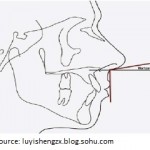 There are more subtle differences between the sexes in this area. There are 2 angles that are used to determine the ideal nose shape: Naso-labial Angle and Naso-frontal angle.
There are more subtle differences between the sexes in this area. There are 2 angles that are used to determine the ideal nose shape: Naso-labial Angle and Naso-frontal angle.
Naso Labial is the angle between a line drawn from the lip border to the base of the columella to the nasel tip. This angle is slightly more obtuse and slightly upturned for females, and it’s also necessary to consider your patients cultural and ethnic differences when treating this area.
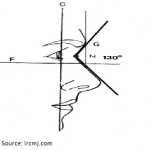 Naso Frontal is the angle at the radix, the lowest point of the nasal bridge formed by a line running from the radix to the glabella and from the radix along the dorsum of the nose. This position of the radix is important between males and females. Females are normally in line with the lash line whereas males are at the level of the tarsal fold.
Naso Frontal is the angle at the radix, the lowest point of the nasal bridge formed by a line running from the radix to the glabella and from the radix along the dorsum of the nose. This position of the radix is important between males and females. Females are normally in line with the lash line whereas males are at the level of the tarsal fold.
Jawline and Chin
Both masculinisation and feminisation techniques can be used within this area. Toxins can be used to narrow down the masseter or curve the chin, and Dermal Fillers can widen the jawline, increase definition or add a sharper gonial angles as well as flatten or enlarge the chin area. Different cultures and ethnicities have different representations of what they believe is an attractive jawline, so it is useful to be aware of this when treating patients. The Hollywood ideal is a defined as a strong wide jaw for males whereas females have a softer narrower pointier chin.
Perioral Area
Treating this area is a more common request in females rather than males. Male skin within this area is thicker than in females, who tend to suffer more with smokers lines and wrinkling. This area benefits from toxin, filler and skin resurfacing treatments for both sexes. If treating a male patient, we suggest you treat with caution.
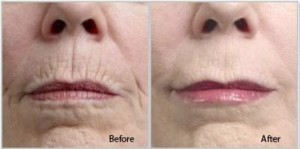 When treating both the female and male face for any aesthetic treatment, it is important to book them in for a full consultation, to undertake a facial analysis. Within this consultation, grade the upper, mid and lower face in terms of structure, proportion and symmetry. Within our training, we advise that you take photos of all your patients and keep these as a record to show before and after treatment– it also helps to show the patient how far they have come on their treatments with you.
When treating both the female and male face for any aesthetic treatment, it is important to book them in for a full consultation, to undertake a facial analysis. Within this consultation, grade the upper, mid and lower face in terms of structure, proportion and symmetry. Within our training, we advise that you take photos of all your patients and keep these as a record to show before and after treatment– it also helps to show the patient how far they have come on their treatments with you.
At Cosmetic Courses, we offer an advanced Botox and Dermal Filler training Course which offers more advanced techniques. If you would like to find out more about the course, or have any questions, please call the team on 01844 390110 or email [email protected]
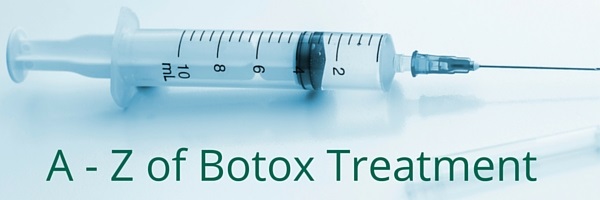
Anti-wrinkle injections, commonly known as Botox® injections can be used to reduce the appearance of lines on your face including frown lines, crow’s feet and forehead lines.
If you’re considering anti-wrinkle injections but want more information our A-Z of Botox will help to answer some of those questions:
Aftercare
Aftercare is important in order to get the best results from your botox® treatment. It is advised that after the first 30-60 mins after having botox you move your facial muscles regularly, smile a lot! Take it easy, get comfy in front of the TV or why not catch up on that book you have been meaning to read. You will need to remain upright and avoid touching or applying pressure to the area. For the next 24 hours Avoid any strenuous exercise and any hot baths or saunas. Any swelling after treatment is completely normal and can be helped with ice, and any slight bruising can be helped with Arnica gel.
Botulinum Toxin Type A | A-Z of Botox
Botulinum toxin type A is a protein more commonly known as Botox® which is actually a brand name just like Bocouture, Azzalure, Dysport and Xeomin. Botox® is made from the bacteria that cause botulism. Botulinum toxin type A works by blocking the nerve activity in muscles which causes a temporary reduction in muscle activity.
Consultations | A-Z of Botox
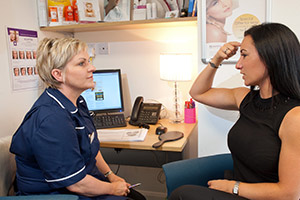 Consultations before Botox® are essential. Everyone’s face is different so what your sister’s best friend got is going to be different to what is suitable for you. Once you arrive at your consultation you will meet your practitioner and you will be able to discuss areas of concern to you. Your practitioner will also go through the possible complications of botox the common of these include swelling, bruising, headaches, and redness at injection site, everything will be discussed in detail and you will also be able to ask any questions before deciding to go ahead or not.
Consultations before Botox® are essential. Everyone’s face is different so what your sister’s best friend got is going to be different to what is suitable for you. Once you arrive at your consultation you will meet your practitioner and you will be able to discuss areas of concern to you. Your practitioner will also go through the possible complications of botox the common of these include swelling, bruising, headaches, and redness at injection site, everything will be discussed in detail and you will also be able to ask any questions before deciding to go ahead or not.
Don’t Drink | A-Z of Botox
It is highly recommended to avoid drinking alcohol 24 hours before and 24 hours after having received the botox® treatment. Not drinking will minimize the likelihood of side effects and reactions. Droopiness is a side effect of botox® especially in the eyelids or eyebrows which can happen when botox® is injected too low, too deep or even too much, always get your botox® done by an experienced medical professional for the best results.
Eyes | A-Z of Botox
Eyes are a common area that people have concerns over and look to botox for help. It is so important that you look a professional practitioner for all treatments of botox® but especially for any treatment that involves injecting around the eye to avoid any un-wanted side effects. Botox® can be injected into the periorbital area to lift tired eyes giving a fresh faced look.
Frozen Face | A-Z of Botox
Frozen Face is a common misconception about having a botox treatment. If done correctly, botox® should not leave you with a frozen face and you should be able to regain natural movement. Make sure you research your practitioners understand that you may not reach your desired effect until after at least 2-3 treatments. Unfortunately if you do end up with a frozen face then the only cure is time, and you will have to wait for it to wear off.
Gummy Smile | A-Z of Botox
Gummy Smile is a phenomenon which causes the upper lip too rises too far above the upper teeth, exposing gums when you smile. If you are hiding away a gummy smile then all is not lost! A small amount of botox® can be injected at the junction of nostrils and nose to mouth fold to relax the hyperactive muscle which causes the lift.
Hyperhidrosis | A-Z of Botox
Hyperhidrosis is actually a common condition where a person sweats excessively. Botox® is licensed in the UK for treating localised products hyperhidrosis in the armpits, it works by blocking the nerves that supply the eccrine glands which then prevents the glands from producing sweat. It is important to remember however that this is not a cure for hyperhidrosis, your nerve endings do return to normal and the sweating will gradually return, at this point you should go back to your practitioner to receive the treatment again. Hyperhidrosis treatment would be suitable for hands, faces and hairline.
Injections | A-Z of Botox
Botox® despite its powdered initial form is an injectable. It is also rarely just a single injection and will generally consist of a series of injections to the upper face although this varies depending on your treatment type. Patients can be pre-treated with a topical aesthetic before treatment which makes them virtually painless. The needle itself is small and each injection is very quick and therefore the discomfort, if any, is over very quickly.
Jowls | A-Z of Botox
Jowls are a natural part of ageing. As your skin starts to lose elasticity you may notice the lower part of your face such as your cheek and jaw areas begin to sag down. Although it is not a common use of the anti-wrinkle treatment because botox targets the muscle you can focus it on to the muscle in your neck that causes wrinkling, sagging and a jowl-like appearance in this area. Using botox® to relax this muscle means that the sagging is reduced.
Knowledge is king | A-Z of Botox
Knowledge is king! Before getting any treatment, especially an injectable like botox® it is always important to do your research and make sure you fully understand the process involved and the recommended aftercare advice. If you are unsure of anything make sure you make a note of the question and ask your practitioner at your consultation.
Licenced | A-Z of Botox
 Botox® in the UK is classed a prescription only medicine which means it can only officially be prescribed by a doctor, dentist or independent nurse prescriber. The prescriber will take liability for the administration of the drug under their supervision. The liability for patient safety rests with the prescriber. Always ask to see a GMC, (General Medical Council) NMC (Nursing and Midwifery Council) or GDC (General Dental Council) registration before letting your practitioner start botox treatment.
Botox® in the UK is classed a prescription only medicine which means it can only officially be prescribed by a doctor, dentist or independent nurse prescriber. The prescriber will take liability for the administration of the drug under their supervision. The liability for patient safety rests with the prescriber. Always ask to see a GMC, (General Medical Council) NMC (Nursing and Midwifery Council) or GDC (General Dental Council) registration before letting your practitioner start botox treatment.
Migraines | A-Z of Botox
Migraines are quite severe headaches which effects on average 1 in 7 people in the UK. But did you know that botox® is reported to be an effective treatment option for adults who suffer with chronic migraines. Although the exact reason why it works is still officially unknown it has been suggested that treatment works by blocking the pain pathways in certain nerve cells.
Natural Results | A-Z of Botox
Our philosophy on botox® is less is more. It is our aim to not let you leave the clinic looking like someone else, but to leave looking like yourself, but rejuvenated. You will obviously want people to notice that you look different, but not allow them to figure out what exactly it is that has changed. So consider having your botox® treatment in stages, let your practitioner know you want natural results and follow your aftercare advice to the letter!
On-going treatments & Other procedures | A-Z of Botox
Botox® is an on-going treatment, one session is not going to make your wrinkles and lines disappear forever. No matter how great you look afterwards, you will generally need to return every 12 weeks for a top-up. At the same time, if you have botox®, and decide it’s not for you, after 12 weeks the effects should have all faded. Other procedures may be offered to compliment your anti-wrinkle treatments; these could include Dermal Fillers, Skin Masks and other Skin Rejuvenating processes.
Practitioners
Picking your practitioner sounds like a hard task, but it doesn’t have to be. Feel free to explore your options and visit as many clinics and practitioners as you want before deciding on one you feel comfortable with. Thoroughly research the procedure and the practitioner, don’t just rely on the practitioner’s/clinic’s own website and don’t make your decision based on the price. We highly suggest using the SaveFace guides to ensure you are in safe hands at all times.
Quick Results
Quick results are not realistic. After having a botox® treatment you are recommended to wait at least 10 days to start seeing the desired effects which will peak at around 2 weeks following your first injection. If you are still not happy after this time then you can contact your clinic or practitioner to discuss your options.
Review
At Aurora, after any botox® appointment we always offer a review appointment 2-3 weeks because it can take up to 2 weeks for the effects of the treatment to actually fully take effect. We get you to come back just so that we can make sure that you have got the best results and sometimes we need to tweak it a little bit just to make it better for you and it just makes sure that you’re getting the best treatment possible.
Sausage
It all started with a sausage! You may, or may not know that the history of Botulinum toxin type A goes all the way back to a poisoned sausage. Botox® is a toxin produced by bacteria first discovered in poorly prepared sausages during the 18th Century. It was named after the Latin for sausage – botulus.
Timings
Treatment times for botox can vary, it often depends on the amount you are having and where. Generally botox® injections take around 20 minutes to complete. Timing is everything with botox®, if you are planning on getting treatment before a special occasion or event then it is recommended you leave 2 weeks between the treatment and the event to look at your best.
Uses
Uses of botox® vary from cosmetic to medical. Medicinal uses include the treatment for Hyperhidrosis, Urinary incontinence, Migraines, Tennis elbow, Bell’s palsy, Squint, and MS and for controlling muscle spasms for children with cerebral palsy to name a few but research is improving all the time to widen its usage.
Vials
When your practitioner receives botox from the manufacturer it will come in avial. Inside the vial is a will be a white powder which is Botox® before injection the powder will need to be reconstituted. The extremely fine powder is dissolved in saline (salt-water) and it then becomes a completely clear solution which is then ready to be administered by syringe.
Wrinkles
Wrinkles and Lines are the common reason for people to choose to have Botox treatments. Upper face treatment can include Forehead lines, frown lines to crow’s feet and bunny lines whereas a lower face treatment would cover marionette, lip, chin and neck lines which can all be reduced with the regular treatment of Botox.
X-Rated
 X-Rated not in nature but in age. Botulinum toxin type A, more commonly referred to as Botox® is actually only licensed for patients aged 18 and over. Here at Aurora Skin Clinics, we would certainly find it unethical to even consider treating anyone under 18, and would never treat anyone unless there was a clinical need. We don’t treat anyone without a full and thorough consultation.
X-Rated not in nature but in age. Botulinum toxin type A, more commonly referred to as Botox® is actually only licensed for patients aged 18 and over. Here at Aurora Skin Clinics, we would certainly find it unethical to even consider treating anyone under 18, and would never treat anyone unless there was a clinical need. We don’t treat anyone without a full and thorough consultation.
Your face is unique
Everyone’s face is unique meaning treatment for everyone is different. For example; if you have a weak frown then less Botoxwould be used compared to someone with a stronger frown with larger muscles who would require more Botox. It is important to always have a consultation before any injectable appointment so your face can be looked at and a course of treatment which is suitable for you can be decided on.
Zinc supplement
Our final letter on the A-Z of Botox. According to a small study carried out by researchers in the USA, it was found that taking a Zinc supplement could make the effects of Botox® injections last approximately 30% longer. The official supplement is actually known as ‘Zytaze’, and is a combination of zinc and the enzyme phytase. Zinc is thought to be necessary in order for Botox® to act as a neurotoxin. And phytase is an enzyme that helps to slow down the breakdown of zinc in the body. So combining the two into one pill effectively boosts the neurotoxic effects of Botox® on the muscles in the face. Further studies will be required to test the safety and efficacy of Zytaze. But the early signs for the supplement as a beauty booster look promising.
To find out more about our Botox and Filler Courses, or if you would like to become a model with Cosmetic Courses for this treatment, please call the team on 01844 390110 or fill in our quick consent form.
Cosmetic Courses
Business Info
Registered Address – Cosmetic Courses, Summerleys Road, Unit E3 Regent Park, Princes Estate, Princes Risborough, HP27 9LE
